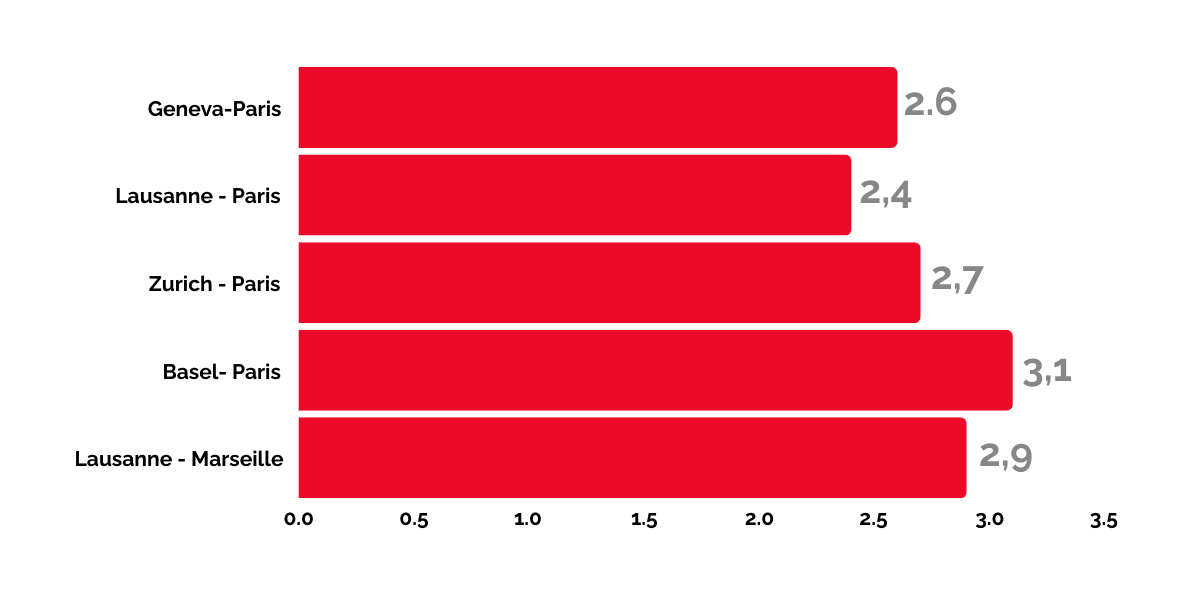We are by far the most environmentally friendly form of transport between France and Switzerland – and the one that enables the best use of your time. In addition to the train journey itself, the entire rail ecosystem has the lowest carbon footprint of all transport ecosystems.
Electricity: the cleanest energy serves TGV Lyria
By running on electricity, our trains do not emit CO2. The electricity consumed for the journey has been produced upstream, however, and this has generated CO2 emissions.
This is what is known as traction energy: the energy consumed when operating plus the energy produced upstream.
When we look at traction energy, there’s no doubt. We have the best environmental performance of all forms of transport between France and Switzerland.
The rail ecosystem, energy-efficient
The train does not emit CO2 when operating. The rail infrastructure (rails, maintenance centres, etc.) is often thought to increase the carbon footprint by emitting a great deal of CO2, as opposed to the air or road ecosystem. In reality, our infrastructure is the least polluting.
The rail ecosystem is also environmentally friendly as it takes you directly into the centre of the city.
The fact that stations are located in city centres means that you have access to a wide range of public transport options, which further reduces your carbon footprint.
On top of this, you'll also benefit from a controlled pre- and post-transportation budget and optimised journey times. What more could you want?
Our carbon footprint in figures
Travelling with our TGV Lyria trains emits up to 41 times less CO2 than flying when taking into account this overall footprint (traction energy + rail ecosystem).
If we compare rail transport to the electric car, both of which work using electricity, we note that the carbon footprint of a TGV Lyria passenger remains 20 times lower than for the electric car.
And yes, clean energy is not everything. It is by offering high capacity transport that the carbon footprint is reduced.
Source; INFRAS 2024
Our low environmental impact trains
Did you know? With the upgrade of our fleet in 2019, we increased capacity on our trains by 4,500 seats across all lines. That’s 4,500 more opportunities to reduce your carbon footprint. That’s innovation for sustainable development – and it’s for you.
Energy used by our new trains

Source : Eq. CO2 per passenger - INFRAS 2024